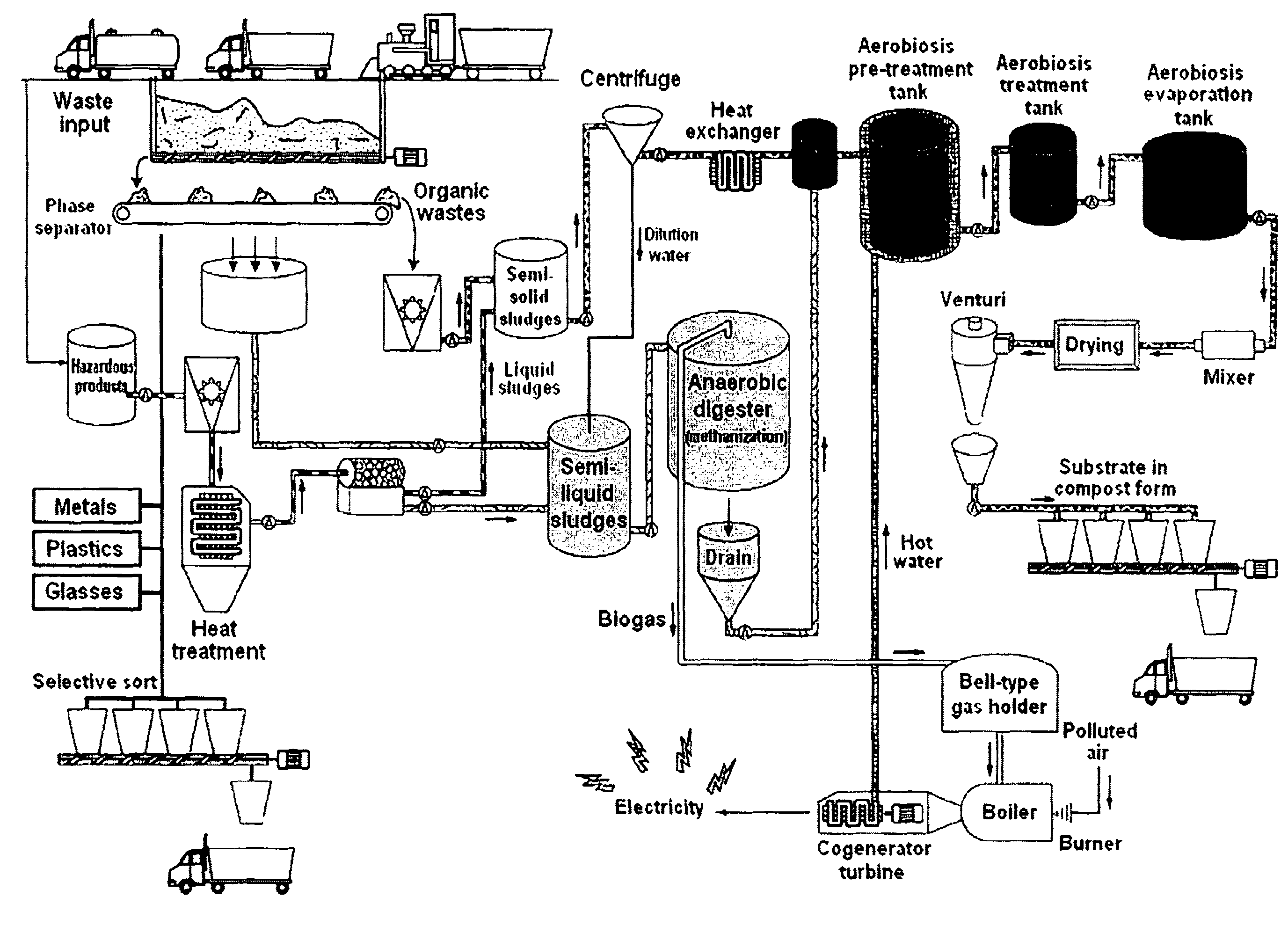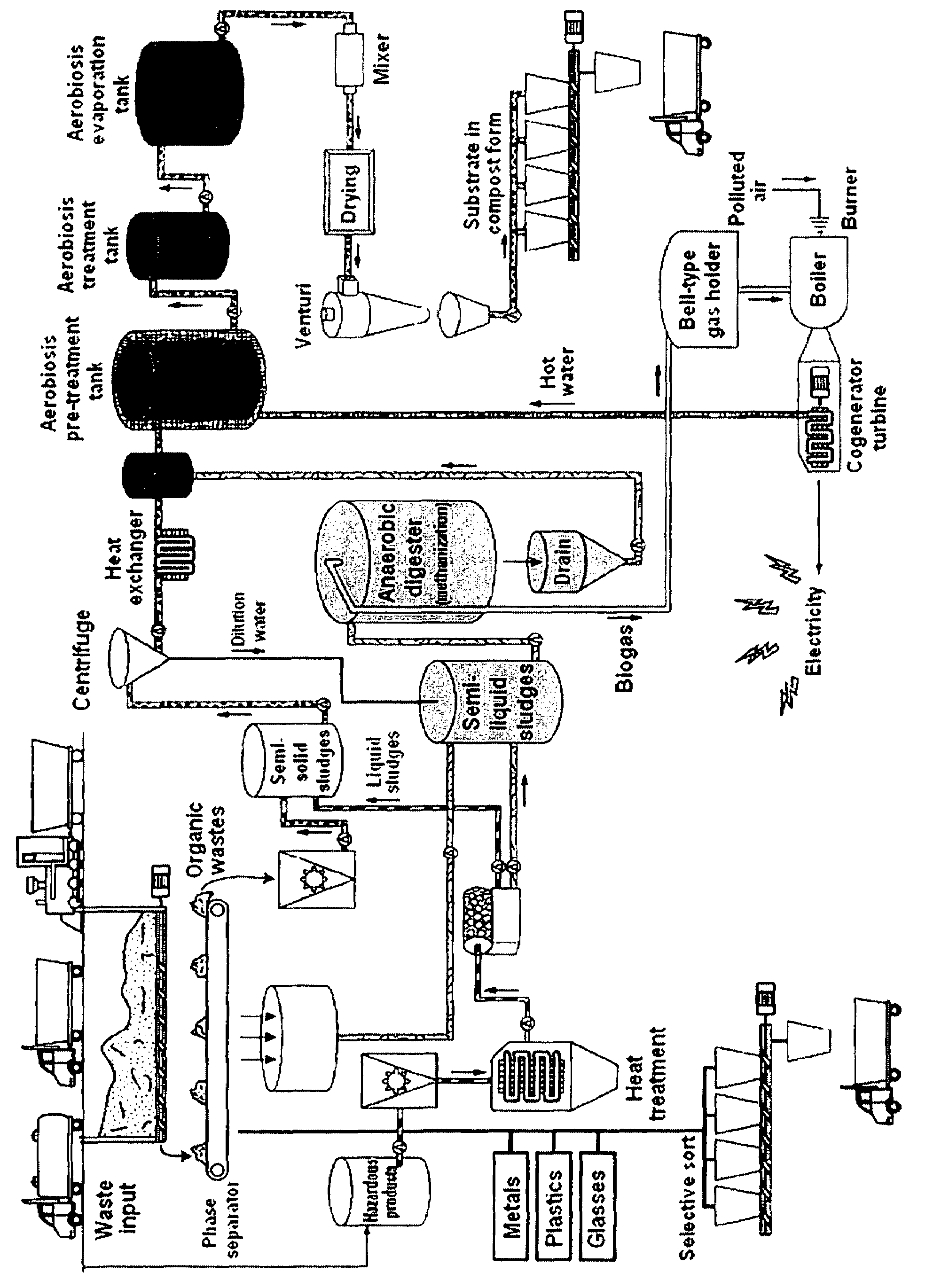Process for the treatment of wastes combining a phase of treatment by methanization and a phase of thermophilic aerobic treatment
a technology of methanization and waste, applied in the field of organic liquid and solid waste treatment, can solve the problems of increasing the risk of infectious agents, difficult sorting, and serious pollution of surface water and groundwater
- Summary
- Abstract
- Description
- Claims
- Application Information
AI Technical Summary
Benefits of technology
Problems solved by technology
Method used
Image
Examples
example
Device According to the Invention in the Form of a Self-Sufficient Modular Treatment Unit
[0093]The treatment unit comprises an intake through which the untreated organic wastes in solid and liquid form are introduced into the enclosure of the self-sufficient treatment unit. Using a phase separator, the liquid wastes are separated from the more solid wastes. The solid wastes undergo manual sorting on a conveyor belt in order to remove those which cannot be crushed. Wastes of this kind, such as for example pieces of wood, are incinerated in the boiler where the biogas is burned. The other wastes are crushed then transferred on a conveyor belt to a first tank of the thermophilic or mesophilic aerobic phase treatment unit, where they are stored. This first tank has a capacity of approximately 110 m3. The liquid wastes are recovered by gravity at the level of a collector which opens out into a digester. The digester is in the form of a cylindrical tank having a capacity of approximately ...
PUM
| Property | Measurement | Unit |
|---|---|---|
| temperature | aaaaa | aaaaa |
| temperature | aaaaa | aaaaa |
| temperature | aaaaa | aaaaa |
Abstract
Description
Claims
Application Information
 Login to View More
Login to View More - R&D
- Intellectual Property
- Life Sciences
- Materials
- Tech Scout
- Unparalleled Data Quality
- Higher Quality Content
- 60% Fewer Hallucinations
Browse by: Latest US Patents, China's latest patents, Technical Efficacy Thesaurus, Application Domain, Technology Topic, Popular Technical Reports.
© 2025 PatSnap. All rights reserved.Legal|Privacy policy|Modern Slavery Act Transparency Statement|Sitemap|About US| Contact US: help@patsnap.com


